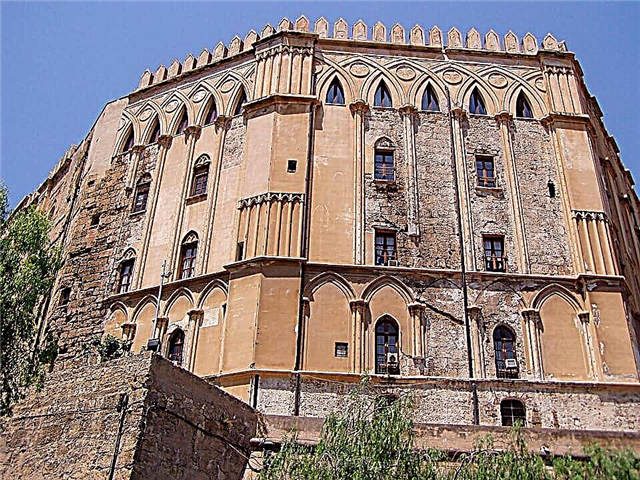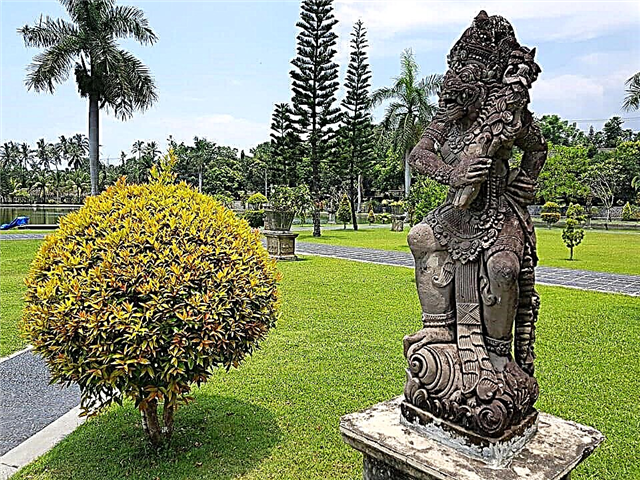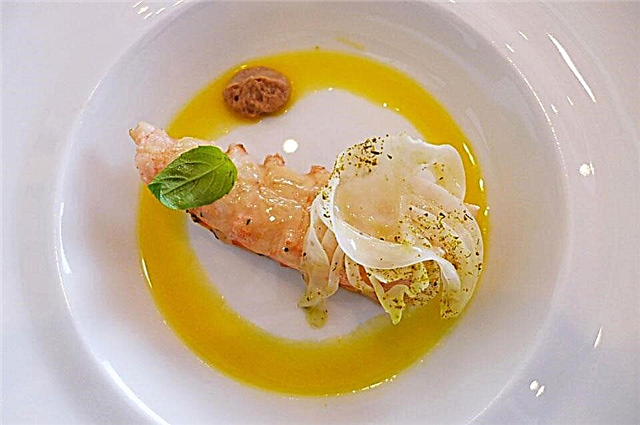Address: Russia, Pskov region, Pskov, st. Nabat, 4A
Coordinates: 57 ° 49'37.0 "N 28 ° 19'40.5" E
Cultural heritage site of the Russian Federation
Content:
One of the most beautiful temples in Pskov is located in Zapskovye - on the right bank of the Pskova River, north of the famous Pskov Kremlin. Not far from it rises the medieval Resurrection Tower. Once these places were called the Stadishche, since the floodplain of Velikaya and Pskov outside Posad was used by the inhabitants of the city for grazing. The church has stood for almost more than 450 years and still pleases the townspeople and tourists with the proportionality of the forms and the picturesque three-span belfry.

General view of the church
Temple history
Once upon a time on the right bank of the Pskova, not far from the mouth of the river, there is a women's Resurrection monastery. The date of foundation of this monastery is unknown, but the first mention of the monastery in the Pskov chronicles dates back to 1458. There are records that the stone church at the monastery appeared in the 1580s.
However, it was not built from scratch. The stone Church of the Resurrection was preceded by a wooden one, which burned down during a great fire on August 15, 1532. Interestingly, when describing the fire in the nunnery, the chronicler talks about the still unfinished stone church.
In the second half of the 19th century, on the initiative of Empress Catherine II, church reform took place in Russia. Like many other monasteries, the old monastery was abolished, and the cathedral church was turned into a parish one. There were not many inhabitants around - only 18 yards. Therefore, after a short time, the Resurrection Church was deprived of its own parable and attributed to the nearby temple of Varlaam Khutynsky on Zvanitsa, whose parish consisted of 86 courtyards. The entire church library was also transferred there.
By the beginning of the 19th century, the Resurrection Church was dilapidated. The city authorities examined the temple and decided to demolish it. However, the Most Holy Synod stood up for the shrine, and the temple was not touched. At the end of the 19th century, money was found for restoration. The builders renovated the church interiors, completely remodeled the iconostasis and erected a spiral metal staircase leading to the choir.
In 1920, the new Soviet government leased the church to the community of believers, uniting parishioners of the Varlaam and Resurrection churches. But only 4 years passed, the Church of the Resurrection was closed, and more than 80 years of worship were not held in it.

View of the porch and belfry
In 1960, the state drew attention to the ancient temple and assigned it the status of a historical and architectural monument. Two decades later, large-scale archaeological excavations took place in the area between Leon Pozemsky and Nabat streets, about 100 m south of the church. The researchers discovered a cultural layer 1-1.5 m thick, in which they dug up the seal of the Novgorod mayor, an ice-drifting thorn and numerous fragments of medieval ceramics.
The revival of the ancient shrine began in 2005 with extensive restoration work. The builders covered the church with a new copper roof, renovated the facades and carried out interior decoration. A few years later, the first divine service was held in the old church.
Architectural features and decor
The Resurrection Church is considered one of the most expressive monuments of Pskov architecture of pre-Petrine times. The ancient temple was built from local limestone slabs and bricks. It has stood in this place for almost 500 years, and during this time the church has been reconstructed several times.
Unlike other churches, which, with the later rebuildings, only lost their original harmony, the transformations of the Resurrection Church made it even more monumental. The basis of the one-domed Church of the Resurrection is a four-pillar quadruple 11 m by 15 m, covered with box vaults. The temple stands on the basement and, together with the head, rises to a height of 25 m. The eastern, altar part of the building has three apses.
The temple has a squat shape typical for Pskov churches, which appeared due to the border position of the city. Due to the frequent raids of the enemy, each building in Pskov was erected so that in case of war it could become a fortress and help the Pskov people defend themselves from enemies.

Southeast facade of the church
At the turn of the 16th-17th centuries, a vestibule was added to the Resurrection Church. Then - a porch and an elegant four-pillar belfry, where seven bells originally hung. Researchers suggest that before the construction of the stone belfry, a separate wooden belfry stood in front of the entrance to the church.
At the beginning of the 18th century, a southern side-altar with a porch appeared near the temple, which was consecrated in honor of the Christian holiday - the Entry of the Virgin into the Temple. In the late 18th and early 19th centuries, the dilapidated eight-pitched roof was replaced with a more practical four-pitched one, and a porch was erected on the site of the ancient side-chapel.
The design of the facades is typical of the Pskov architecture of the 15th-16th centuries: they are divided into three parts by blades and are connected in the upper part by creeping arches. The drum under the head is decorated with a typical Pskov pattern with alternating "curb" and "slider". The same ornament is repeated on the apses of the temple. In addition, on the apses of the quadrangle, you can see the decoration of roller streaks. In contrast, the side-altar apse has no decorations.
From the south, the facade of the Vvedensky chapel is decorated in a very original way - with two expressive suspended arches. This architectural solution is not typical for Pskov architecture and was most likely borrowed from Moscow architects. Another interesting feature of the Resurrection Church is the unusual hemispherical shape of a small dome above the chapel.
The inside of the church is whitewashed and has no wall paintings. Pilgrims and tourists who come to the temple can see icons, an openwork spiral staircase to the choirs and a model of a cuvuklia - a chapel, which is located in the center of the Church of the Resurrection of the Lord in Jerusalem.

View of the church from the street Leon Pozemsky
Current state and visiting regime
Today the Church of the Resurrection from Stadishte is a functioning Orthodox church. As an architectural monument of the 16th century, it is under state protection. The Resurrection Church is a national treasure, one of the town-planning dominants of the old Zapskovye region and is included in many publications dedicated to the monuments of Russian architecture.
The doors of the temple are open to pilgrims and tourists every day from 8.30 to 19.30. Two thrones are consecrated here: the main one - in honor of the Resurrection of Christ and the side-altar - in honor of the Entry into the Temple of the Mother of God. Services are held every day at 9.00 and 17.00. Several icons with particles of the relics of Christian saints are considered to be temple shrines. In the future, the church plans to open an Orthodox gymnasium.
There are many trees growing near the Resurrection Church, and beyond Leon Pozemsky Street to the very shore there is a spacious green park of the Pskova River. The area around the church is very picturesque and great for walking. Near the mouth of the river, a section of the fortress wall of the Okolny town has been preserved and the old Resurrection tower rises, which got its name from the Church of the Resurrection from Stadishche.
How to get there
The temple stands in the historical center of the city, near the intersection of Leon Pozemsky (former Zvanitsa) and Nabat (former Voskresenskaya) streets, 200 m north-east of the mouth of the Pskova River (Nabat street, 4A). The nearest public transport stop "Oleg Koshevoy Street" is located 250 meters from the church and can be reached by buses No. 1, 7, 7A, 18, 25 and route maxi No. 51, 51A.

View of the church from Nabat street
Those who get to Pskov by car, on the southeastern outskirts of the city, need to turn off the P23 highway (Leningradskoe shosse) onto the A212 highway leading to Pskov past the Kresty airport. In the city, it continues as Oktyabrsky Avenue and Sovetskaya Street.In the center of Pskov, you need to drive past the Kremlin and cross the Pskov River along the Troitsky Bridge. From the bridge to the Church of the Resurrection from Stadishche - only 0.7 km of the way along the street Leon Pozemsky.











